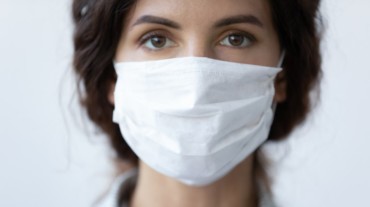
Indoor spaces with good ventilation and fewer closed air-conditioned spaces are the reason for fewer deaths due to coronavirus disease (covid-19) in developing Asian countries including India, said an analysis in the Asia Pacific Journal of Public Health.
The virus remains airborne in enclosed spaces, leading to repeated exposure and a build-up of high viral load in the upper respiratory tract, increasing the severity of the disease and mortality, said authors from Delhi and Mangalore.
“People in the developing countries tend to spend less time in air-conditioned enclosed places, where the viral load is higher due to lack of ventilation. This could be the reason for fewer deaths reported from several Asian countries. In fact, the initial surge in cases was reported from European countries, where people might have stayed indoors longer in the winter months of January and February,” said Dr Shyam Aggarwal, the first author of the study and chairman of oncology department at Sir Ganga Ram hospital, which collaborated with Max Smart Superspeciality hospital in Delhi and Kasturba Medical College in Mangalore for the article.

In India, the overcrowded homes are leading to the spread of covid-19
“Even though not many people spend time in air-conditioned offices in India, the problem here is that of several people living in close proximity in small houses leading to transmission within families,” he said.
While examining whether airborne transmission of the viral infection is possible, the World Health Organisation in July said that “short-range aerosol transmission, particularly in specific indoor locations, such as crowded and inadequately ventilated spaces over a prolonged period of time with infected persons cannot be ruled out.”
Clusters of covid-19 infections have been reported across the world in such inadequately ventilated spaces such as a cluster of 10 cases reported in people who had eaten at an air-conditioned restaurant in January end in Guangzhou, China.
Another cluster of 52 people was reported from a choir practice in Washington, US in March. Over 100 cases of covid-19 were traced back to a dance fitness class in South Korea in February. Or the more recent cluster of 27 cases linked to a coffee shop in South Korea in August.
The doctor says there is a need to increase air exchange in such enclosed air-conditioned spaces. “To make places that do not have enough ventilation and are completely air-conditioned, the number of air exchange–circulation of outdoor air in the air-conditioning system – every hour has to be increased. In some places, there were just five air exchanges each hour once summer started as it puts more strain on the system and leads to more electricity consumption. This has to be about 12 to 15 exchanges an hour,” said Dr Aggarwal.
Experts say that the existing evidence suggests that ill-ventilated, completely air-conditioned buildings must be avoided, but whether it leads to higher mortality is not known.
“In a healthcare setting, some procedures lead to aerosolization of the bronchial fluids that have a high viral load and it has been seen that it puts people in the areas at a higher risk of infection. In other building, if adequate outdoor air infusion is not ensured and some way of killing the viral particles–such as plasma ionisation or UV ray treatment–then there may be a higher risk of infection,” said Dr Neeraj Gupta, a professor in the department of pulmonology at Safdarjung Hospital.
Select Topics of your interest and let us customize your feed.
PERSONALISE NOW“But I do not think it can explain the disparity in the number of deaths in various countries. Scientists are still trying to figure out the causes of fewer deaths in some places – whether it is demography, an unconducive environment for transmission, the virus mutating to become milder, genetic factors, use of certain medicines or vaccines like HCQ and BCG,” he concludes.
Get Latest Updates on Health News